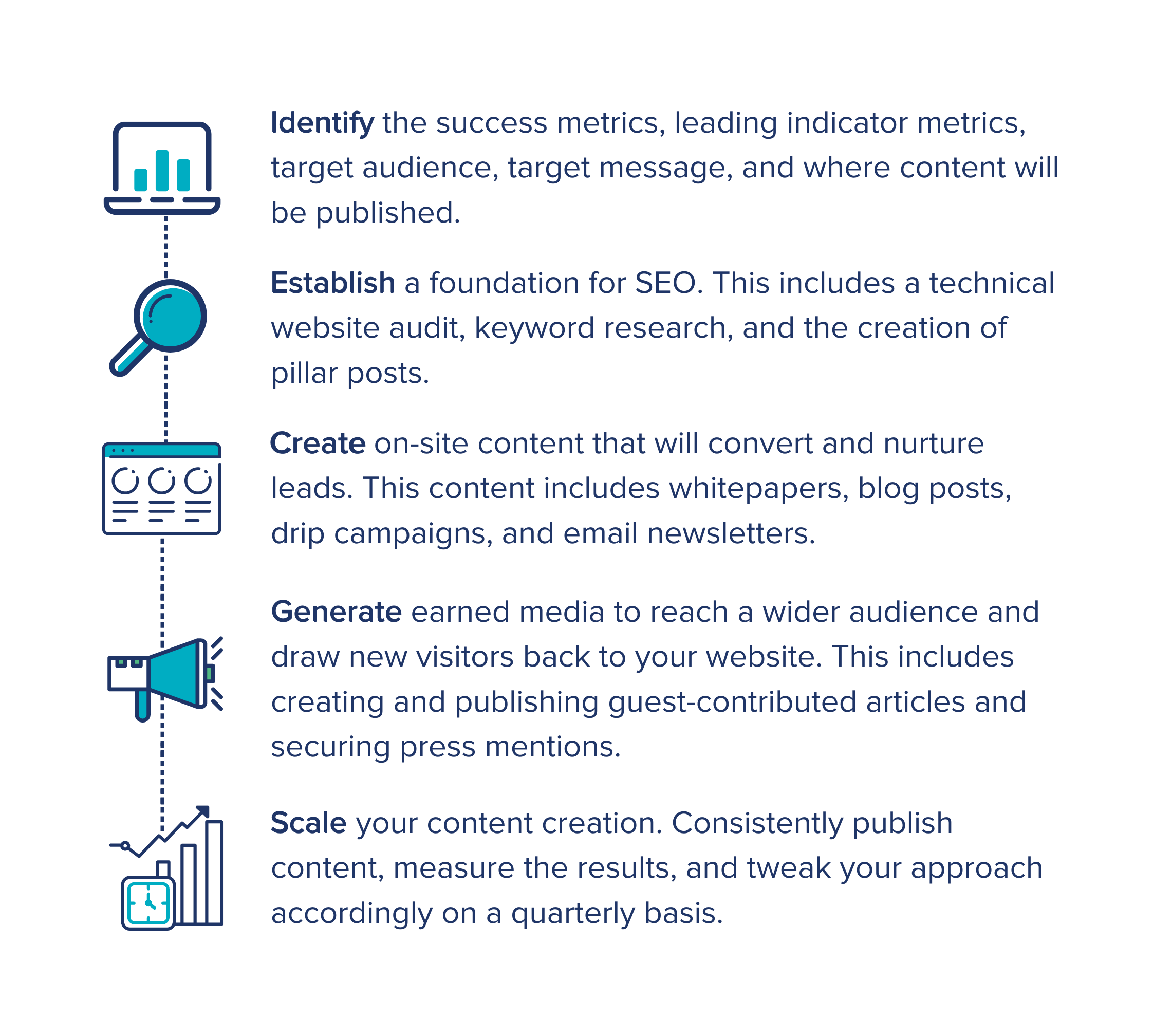
How to Measure Content Marketing Success Holistically
How to Measure Content Marketing Success Holistically
Kelsey Raymond, COO • Intero Digital • May 11, 2020

Most marketers use content marketing to work toward their marketing goals, but only 43% of content marketers measure their content marketing ROI, according to Content Marketing Institute. More than half of B2B marketers are missing the chance to quantify their content strategies’ success.
The bigger problem? Many marketers who track metrics tend to measure the impact of their content marketing strategies using the performance of each individual piece of content. And many also focus on just one or two metrics, like page views and social shares. But that’s a flawed approach.
To get a well-rounded picture of how your content strategy is impacting your business, you have to understand how each piece fits into the bigger strategy and take a holistic approach to judging your content marketing success.
Content Performance Is Relative
Measuring content marketing impact by each individual piece of content’s performance can lead to misinterpretation. Performance is relative, after all. What’s considered high performance for one piece of content or one metric won’t always apply across the board.
For example, our industry-focused blog posts aren’t driving as many call-to-action clicks or page views as some of our broader marketing industry content, but those posts are very helpful for our sales team. When communicating with leads in various industries, our salespeople can find the relevant blog post and pass it along to provide value and nurture the lead. That sales enablement use case makes those industry-focused blog posts more valuable than the traditional performance metrics might imply.
Another example is a blog post we published to announce some changes to our executive leadership team. While it racked up quite a few page views and social shares, it didn’t receive any call-to-action clicks, which is a key metric we track to measure our content marketing performance. Considering that metric alone, some marketers might say that we shouldn’t publish posts of this nature anymore because they don’t perform well. But part of our holistic content strategy is using content to humanize our brand and showcase our core values. So while posts like this won’t generate leads for us, we can still use these pieces of content to achieve those other marketing goals.
Looking at Content Marketing Holistically
Any content marketing goal is unachievable if it’s not paired with a strategy that can be implemented and measured against.
We’ve talked to companies that have come to us with the goal of “going viral,” for example, but you can’t make a company go viral overnight. So we ask questions and dig deeper. Ultimately, what we uncover is that the company thinks the viral exposure will drive sales. And driving sales is a goal we can build a holistic content marketing strategy around.
Marketing’s role in driving sales is to generate leads. Here’s what it would look like to build a holistic strategy around the marketing goal of lead generation:

A key component of step five is measuring results and altering your content marketing strategy accordingly. Let’s take a closer peek at what it might look like to evaluate your content marketing metrics holistically.
How to Take a Holistic Approach to Content Marketing Metrics
To continue with the same example, we’ll keep looking through the lens of a lead generation content marketing goal. To gauge the success of a content marketing strategy focused on lead generation, we’d need to look at metrics that tell us the volume of traffic, what’s driving that traffic, what’s causing passive readers to convert into marketing qualified leads, and which of those leads convert into customers.
Some metrics that check those boxes and can help paint a holistic picture of your content marketing ROI for lead generation are:
- Organic traffic
Organic traffic refers to the number of people who learn about your company on a search engine results page and click through to visit your website. When your website attracts a lot of organic traffic, that tells you that your content ranks high for the terms your audience members are searching for. A key component of lead generation is getting your target audience to find and engage with your website, so this is an important metric to track.
- Call-to-action clicks
Once someone who found your website in organic search lands on your website (likely on one of your blog posts), the CTA click rate (paired with the bounce rate — more on that in a second) shows you how well your content is resonating with your target audience.Each blog post should include calls to action to encourage readers to engage further with your brand. And if your CTAs align well with the information in the blog post, your audience is more likely to click on that CTA (and it’s even better if that CTA leads to a piece of gated content that lets you capture that person’s information). If organic traffic drives to your blog post but readers aren’t clicking on your CTAs, you’ve learned that while your audience might have found the blog post valuable enough to visit that page, they don’t think the CTA is enticing enough to warrant a click.
- Bounce rate
Stop scrolling! Bounce rate is a metric I refuse to let you discredit. Your content might have catchy titles that pull people in, but if the content doesn’t deliver on the promise of the title, your audience will bounce. Yes, you can try to make the case that the readers got all the information they came for and didn’t need anything else so they left. But remember, we are focused on a holistic content approach, so we want to keep potential leads engaging on your website. If they visit your site and bounce right away, there’s an increased risk that they’ll end up finding what they were looking for on a competitor’s website.
- Marketing-qualified leads
Quality trumps quantity. Ranking well in search results and driving traffic are great, but bringing the right traffic to your website is more important.
Marketing-qualified leads are leads who have visited your website and provided their contact info but have not necessarily raised their hand to talk to your sales team. These people have taken enough actions and provided enough information to signal to your company that they would probably be good fits for your services.After tracking the number of MQLs quarter over quarter, you’ll be able to develop an equation that can help predict sales. For example, in Q1 of 2020, our marketing team was focused on securing a minimum of 863 MQLs.
If your primary goal is lead generation, the above metrics are a great way to start measuring the results of your digital content strategy. But once you’ve tracked these metrics, don’t forget to zoom out and take a more comprehensive look at how all of these metrics work together. Also review any other marketing or sales results you see as a result of your content marketing efforts. When you do that, you’ll be able to make more informed, strategic decisions and create more effective content.
